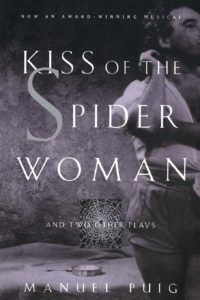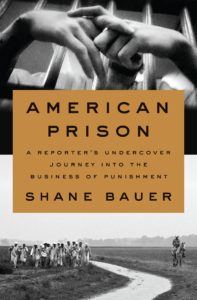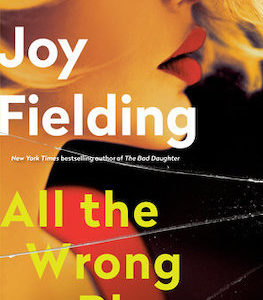My first visit to a penitentiary came at East Jersey State Prison, a.k.a. Rahway, a notorious four-winged monstrosity whose oldest sections were built in the 19th Century.
Even though it was the early 2000s by the time I got there, little had changed. The joint was all hard surfaces—brick, concrete, and steel—that amplified every angry yell and slamming door into a maddening cacophony. The place seemed to have been designed to reinforce the bleakness of incarceration.
I was there on a one-day visit. I don’t recall who I went to interview, nor what the story was. What I remember, quite vividly, was the way my blood pressure spiked up as I passed under the razor-wire fence—and how it stayed that way the entire time I was there.
My next sentence, also a one-day bid, was at New Jersey State Prison in Trenton, another old, hard place. I was 32 at the time, but again felt like a hypertensive 85-year-old off his meds.
If that’s what it was like for me, a visitor who got to go home at the end of the day, imagine what it’s like for people who had to spend months or years there.Later, when I turned to a life of crime fiction, research for novels gave me cause to enter several state prisons in Virginia.
By then, I knew what to expect: That I would have a physiological reaction to the psychological stress of being behind bars. And if that’s what it was like for me, a visitor who got to go home at the end of the day, imagine what it’s like for people who had to spend months or years there. After all, prisons are bad places where bad things happen.
Which is also what makes them a compelling setting for fiction.
The bulk of the action in my latest novel, The Last Act, takes place in a federal prison, where an out-of-work actor named Tommy Jump has gone, at the behest of the FBI, to play the role of inmate—in the hopes that he can weasel information out of another inmate, a disgraced former banker who knows the location of documents that can bring down a major drug cartel.
The moment Tommy enters the Federal Corrections Institute in Morgantown, West Virginia—the real-life facility that I used as a setting—the stakes in the novel palpably increase, just like my blood pressure once did.
But I’m not the only who has found the big house to be an inspiring backdrop for a book. That’s why I’m here to share. . .

Rita Hayworth and Shawshank Redemption by Stephen King
This is actually a novella, found in a collection titled Different Seasons, that serves as the basis for the move “Shawshank Redemption.” In the novella, as in the movie, the narrator is Red, a prison hustler who befriends a fellow inmate named Andy Dufresne. And, much as in the movie—which is lifted by the ever-brilliant Morgan Freeman—it’s Red’s voice that really carries the work. And take it from Red: “Prison is like a big pressure-cooker, and there have to be some vents somewhere to let off the steam.”

Kiss of the Spider Woman by Manuel Puig
The story of two inmates sharing a cell in a Buenos Aires prison. Valentin Arregui is a political prisoner who has been trying to overthrow the Brazillian government. Luis Molina is a transgender woman who really, really likes movies. This can be a little tough to get into, because it’s stream-of-consciousness (unless you’re a James Joyce fan, in which case it’s a breeze). But there’s a great twist in the middle that helped make it an international sensation.

Affinity by Sarah Waters
Forget Orange is the New Black. If you want a really tough women’s prison, you can’t go wrong with the Victorians. This novel, set in England in 1874, tells the story of an upper class woman who enters prison each day as part of her charity work and strikes up an unusual relationship with an inmate. Waters’ research—and imagination—are in high form, and her visceral representations of the sights and smells of prison are unforgettable.

Newjack: Guarding Sing Sing by Ted Conover
This is not technically a novel. But it sure reads like one. Conover spends a year as a corrections officer at Sing Sing State Prison in upstate New York. It’s a spectacular piece of participatory journalism, giving great insight into both the tedium and the inherent brutality of prison life. Particularly instructive is watching as Conover, who enters with hopes of bringing a sense of humanity to his treatment of the inmates, slowly get eaten up by the place.

An American Marriage by Tayari Jones
Roy and Celestial are the upside of the New South—a young African-American couple on the rise. Yet just as they seem to be reaching escape velocity from the racial oppression that defined their parents’ generation, Roy is sentenced to twelve years for a rape he did not commit. Much of the book is letters between the couple while he’s incarcerated, and while Roy doesn’t really delve into the nitty gritty of prison life, it’s a gripping reminder that for every person sitting in prison, there’s usually someone outside who is serving a different kind of sentence.

The Green Mile by Stephen King
Okay, two King books in the same list. But this one is too terrific to leave out. Through the eyes of death row supervisor Paul Edgecombe, we get the story of John Coffey, a giant of a man who is sentenced to die—but, it turns out, has supernatural healing powers. Originally released in serialized form, as six separate works, it has some great cliffhangers in the middle if you consume it as one volume. A quick caution: don’t read the execution scene of Eduard Delacroix if you’re about to go to sleep. Just don’t.

American Prison by Shane Bauer
Yeah, yeah, another non-fiction. So I like journalists, sue me. Originally published as a piece in Mother Jones, this is a jaw-dropping expose about Bauer’s four months as a private prison guard in Louisiana. If you are not seriously troubled by the entire notion of for-profit prisons by the time you’re done with this book, go back and read it again because you missed, like, everything.

The Count of Monte Cristo by Alexandre Dumas
Might as well end with a classic. Even if you think you don’t know this story, you do—because it’s been ripped off, reimagined, and retold so many times (one recent example being the popular television show “Revenge” on ABC.) Prison stories are nothing if not about the slow burn of being incarcerated, especially for a crime you didn’t commit. And no one burns quite as hot—or does retribution quite as well—as the Count of Monte Cristo.

















